Autism can be both children and adults. This article will focus on childhood autism (children with early childhood autism). Currently, there are several explanations for the phenomenon of the human psyche called autism. Fans of one version or another are ready to provide an almost endless array of convincing, in their opinion, evidence in defense of their assumptions.
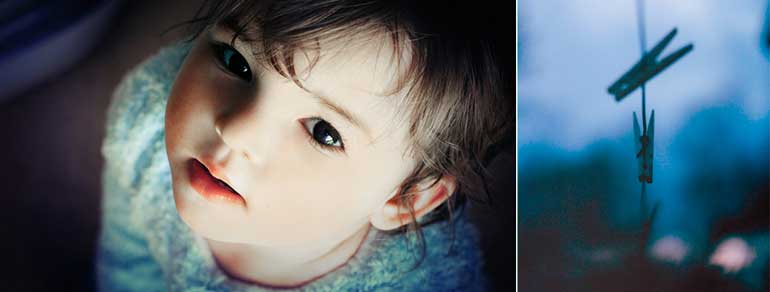
Early childhood autism
Some argue that autism is a psychiatric illness, and put it on a par with schizophrenia and for some reason is compared with Down syndrome. Although there is nothing in common between this syndrome and autism. Others are convinced that autism is not a disease at all, but a special mental and partly physiological state, thanks to which a person sees the world differently and interacts with the world according to his own special rules. Still others claim that autists are some kind of marvelous aliens who have appeared on Earth from other worlds.
In fact, at present, only one thing is known for certain. Autism is an innate feature of the human psyche. It is innate, that is, it is impossible to acquire autistic properties in the process of life, with them a person is born. It is impossible to get rid of these properties: these are a kind of instincts given to autists for survival. An autistic child grows into an autistic adult.
The main differences between autistic and ordinary people:
- Autistic, as he can, avoids contact with the outside world. He does not want to communicate with people, and if he communicates, then only to the extent necessary. Any stay in society takes away a lot of energy from him. To recover, an autist needs to spend a long time alone.
- He has his own inner world in which he dwells for the most part and in which he does not allow anyone.
- Autistic seeks to live according to his own rules, understandable only to himself.
Separately, one should touch on such a question as the number of autistic people in the modern world. Many argue that every year more are born.According to them, if earlier in 10,000 normal children there were 2-3 babies with autistic deviations, in recent years up to 200 children with early childhood autism syndrome have already accounted for the same 10,000 normal children. On the basis of these figures, even an assumption arose that a mysterious “autistic epidemic” was spreading in the world.
Serious researchers refute such rumors, and they see no “autistic epidemic”. In their opinion, the percentage of children born with signs of early autism is constantly stable and ranges from 5 to 20 “outs” for the same 10,000 ordinary babies. Serious scientists explain allegations of an incredible number of newborns with autistic symptoms as a tribute to the aforementioned fashion. And, of course, fear: as you know, all the unknown person is afraid. Those who fear are always exaggerating their fears.
Causes of childhood autism
There are many versions, hypotheses, and assumptions about what autism is. However, the true reason that this is actually such is still unknown to anyone. Currently, none of the assumptions is fully proven. And since this is so, the versions continue to multiply - from more or less scientifically sound to the most fantastic:
- Autism is inherited. Advantages of this version: indeed, sometimes an autistic father and an autistic child are in the same family. Cons: with almost the same frequency, a child with autism syndrome can be born in an ordinary family;
- Autistic is usually the first child in a family. However, recently it has been proven that with the same frequency, an autism can be a second child, and a third, or even an eighth or tenth. To this day, no “iron” pattern has been found here;
- The mother who gave birth to an autistic child suffered from a viral disease during pregnancy: rubella, measles, chickenpox, etc. As a result of a mother’s disease, the fetus’s brain began to develop incorrectly, hence early childhood autism. Advantages of this version: indeed, most autistic children in the first years of life have excessive brain development, which is confirmed by scientific research. Cons: Currently, the direct relationship between maternal disease and exorbitant brain development in a child has not been proven;
- The child becomes autistic due to the “coldness” of his parents. In other words, if the parents do not pay due attention to their child and do not communicate emotionally with him, then the baby closes in on himself - hence children's autism. Not so much a similar version was held in high esteem, but then it was proved that autism is an innate property, and now this version is thoroughly forgotten;
- One can also hear the hypothesis that children become autistic due to vaccinations. This version also does not stand up to serious criticism all for the same reason: they do not become autistic, they are born;
- Recently, more and more fans of the hypothesis that autism syndrome is a malfunction in the genetics of a particular person when this person is still in the mother’s womb. True, which particular gene was “stoned”, and why this particular, and not some other gene, is still unclear;
- All sorts of fantastic versions of the phenomenon of autism (such as "autistic is a person of a new race" or "autistic is an alien") are out of the question.
Symptoms and signs
Speaking about the symptoms and signs of autism, several important circumstances should be borne in mind. First: when speaking about the symptoms and signs inherent in autistic children, it must be borne in mind that we are talking specifically about their characteristics of psychological development, but not at all about intellectual abilities. To perceive autistic children as some kind of fools is a big mistake, not to mention the moral aspects of this perception. Second: it should not be assumed that the symptoms discussed here are inherent in any child with an autistic spectrum of perception, without exception. It is proved that every autistic person (including a child) differs from that of his own self to a much greater extent than ordinary people differ from each other.
Therefore, the following list of symptoms and signs will be somewhat generalized. In other words, someone - this or that sign / symptom is, someone - is missing. Here a lot depends on the psychological structure of the baby. Well, and, of course, from what kind of people of "autenka" surround and how they influence it. Although in any case, it should be borne in mind that all the behavior of the child is aimed at fencing off from the outside world and not allowing anyone into his own inner world.
Manifested autistic symptoms largely depend on the age of the child. From the moment of birth to the age of 2 they are as follows:
- The child does not express affection for mom. He does not smile, does not draw his hands to his mother, does not worry when she is not there;
- When communicating, the baby stubbornly does not look into the eyes and the mother's face. In figurative expression, he constantly looks “through” or to the side;
- He doesn’t react at all when the mother takes him in his arms, and if he does, then scream and cry. Very often, small “outs” abandon their mother’s breasts. It seems that the baby is better when no one touches him and does not touch him;
- A child with early autism does not want to play in the company of other children, he likes to play alone. Moreover, he is usually indifferent to traditional children's toys, preferring a foreign object as a toy: a wheel, a sliver, a piece of rope, etc. In general, fragments of an object are much more interesting to him than the object as a whole;
- The child does not point a finger at an object or person that interests him, as most children do;
- Communicating with other people, he often treats them as objects, that is, he does not understand the differences between a person and an object. Or - does not consider it necessary to distinguish one from another;
- Usually the child does not respond to his name;
- For a long time, he may not talk - sometimes up to 5 years old and even 7 years old. And if he talks, it is extremely rare and reluctant. Sometimes, having uttered several quite meaningful phrases, he again may be silent for a long time (why the child does not start talking for a long time);
- He does not tolerate any changes, and as he can, resists them. Any change in the situation, in clothes, in food can cause fear or aggression in the “autenk”;
- Sleeps poorly, can lie for a long time, looking somewhere in space;
- It reacts very sharply to some external stimuli: noise, a set of certain sounds, bright light, smells, some words spoken by other people, etc. All of this can be very frightening or may cause a protest in it up to tantrums;
- A separate point should be noted hypersensitivity of a small autistic to touch. Unbearable suffering can be brought to him by seemingly ordinary things and actions of other people: a tag or seams on clothes, too tight clothes, a collar fastened under the throat, a scarf, cold zipper on the jacket, stroking on the head, attempts to take by the hand or kiss, etc. All this can cause a violent protest and even hysteria in the baby;
- Such children usually have anorexia (that is, it is, then it is not). In addition, a small autistic often refuses certain dishes, while he prefers other foods. Any attempt to add variety to the menu causes fear and sharp rejection;
- Autistic child intelligence may develop as usual, may lag or be ahead of the natural schedule. What it depends on is unknown.Very often, intelligence develops one-sidedly: in a certain field, a child can achieve phenomenal successes just the same, and in other areas - not even know basic things;
- The listed symptoms can be considered primary signals for parents. If at least a third of these signs are regularly observed in a child, then this is an occasion for parents to think about whether their child is an autist.
Starting from 2 years old and ending with 11 years of age, an additional autistic signs usually appear in a child:
- The baby may either not speak at all, or speak extremely rarely, or constantly utter the same word or phrase (the so-called echolalia);
- Sometimes a child can be expressed in long and complex phrases that are not appropriate for his age;
- An autistic often encounters an unconsciousness of his own “I”: he can talk about himself in the third person, or use the word “you”;
- Almost never a child starts a conversation first and seeks to evade a conversation started by someone else;
- The slightest change in the environment to which the child is accustomed causes panic and inappropriate behavior in him. Moreover, the disappearance of man means for him much less than the disappearance of a familiar object;
- Autism often has fears that cannot be traced back. However, the reasons for real fears for him, as it were, do not exist;
- In children with autistic deviations, such features as clumsiness, poor coordination of movements, inability to control their body (or, in other words, a weak sensation of the body in space) are especially pronounced. For these reasons, the “autenka” has problems with fine motor skills, he is not able to learn to ride a bicycle and swim, he is not subject to even the most basic gymnastic exercises;
- The baby spends most of the time performing uniform actions: it sways like a pendulum, looks at some object, shakes it with hands, etc. Moreover, this can happen both day and night;
- A child with great difficulty acquires basic self-care skills. Often they are completely impossible for him;
- Quite often, children with early autism syndrome are not able to master writing and reading;
- But - they can rapidly develop extraordinary abilities for a particular type of activity: drawing, music, programming, mathematics, writing;
- Little autistic people usually plunge into their own world. Attempts to get them out of there always meet stiff resistance.
[sc name = ”rsa”]
From the age of 11, autistic traits are finally formed:
- More and more, the child shows a craving for solitude. He does not look into the eyes of other people. In other cases, on the contrary, he can look into the eyes too closely, get too close to another person, speak very loudly or, conversely, quietly;
- He begins to use a few words, which often gives the impression that the “autenka” has an excessively poor vocabulary;
- The child develops a kind of "autistic accent", that is, the child begins to speak with the intonation of the robot;
- The same goes for gait: it becomes unnatural, uncoordinated, often - like a robot;
- Some of the autistic children are overly active, others are extremely distant and withdrawn;
- Making a friendship with someone or building a romantic relationship is usually not possible for an autistic child.
In addition to the above, most children with autism have other signs of deviation from the generally accepted standard of development:
- Stubborn unwillingness to look into the interlocutor's eyes;
- Unwillingness to laugh when people try to make him laugh, and, conversely, causeless laughter in an inappropriate situation;
- The use of gestures instead of words;
- Lack of reaction to words addressed to him;
- Inability to play role-playing games and inability to come up with game plots;
- Often an autistic child cannot speak.Sometimes - even becoming an adult;
- All autistic people, including children, differ in stereotyped behavior. Rituals are very important for them: the same atmosphere, the same food, the same routes. The slightest change will completely disorient the autistic child and will almost certainly cause him to be whims, tantrums and other forms of protest;
- Outrageous concentration on any particular lesson or fragment of something. A small autistic person can engage in any activity all day without being distracted. Attempts to distract him, in most cases, are followed by a reaction in the form of anger;
- He is not aware of the danger of the situation, for example, he puts things into a power outlet, picks up sharp objects in his hands, tries to cross the road along which the car travels at high speed.
Video interview: how to recognize childhood autism: the main symptoms
How an autistic child sees the world
To understand more about an autistic child, one needs to say separately about how he sees the world around him. It is clear that babies are unlikely to say anything clearly about this. Adult autists speak more about their vision of the world. They claim that they see the surrounding reality very differently than most people. Moreover, according to their assurances, they have always seen the world since birth.
Most of humanity sees the world around it in its entirety. Autists see everything fragmentary: at first - one particle of the surrounding reality, then - the third, fourth and so on. Having fixed a lot of particles in the mind, people with autistic deviation compose an integral picture of them. From the point of view of most people, it is difficult. But autistic people cannot see otherwise.
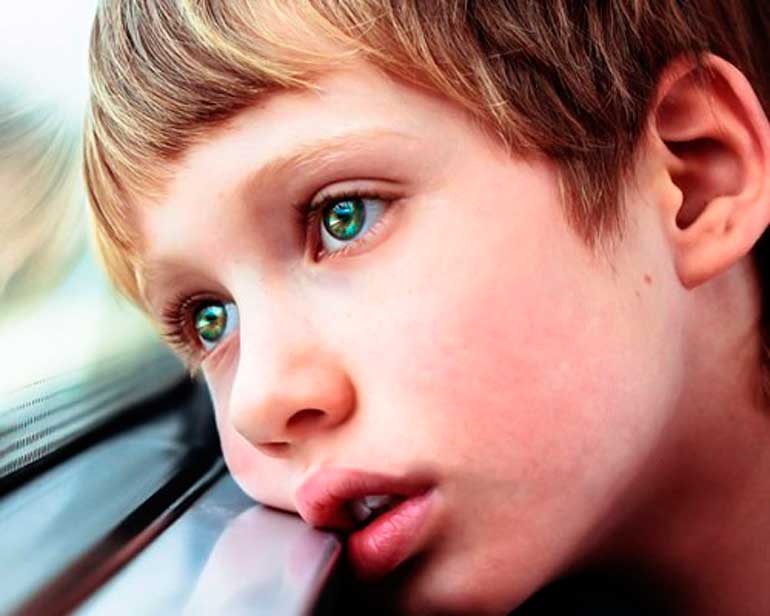
They think about the same thing. In order for an autist to have a thought, he first needs to build a picture of what he thinks in his mind. To build a picture, you must first collect it in fragments. This is much like a well-known game - folding puzzles. However, for autistic people this is not a game, but the only possible way of perceiving the world.
Many researchers of the phenomenon of autism agree that it is primarily the autistic worldview and thinking that explains the behavior of autists. Autistic child not paying attention to mom? This is because the visible image of his mother did not have time to form in his brain. He does not hear the words addressed to him? This is because a picture denoting these words has not lined up in his mind.
Types and main syndromes of autism
Due to the fact that autism is an extremely complex and poorly understood phenomenon, a clear qualification of its types does not yet exist. Autism is usually divided into several subspecies, each of which has its own characteristic features:
1. Canner's syndrome (named after the scientist who first described this subspecies of the disorder). This is the so-called classic autism. Its main features have been described above. Autistic individuals affected by this syndrome may not be in contact with the world at all or in a limited way (for example, during their whole life they may not talk, be unable to walk, take care of themselves, etc.).
2. Asperger Syndrome (named after the scientist who first classified this subspecies). This syndrome is also called "highly functional autism", and its carriers - "Aspi":
- Most “aspi” have normal intelligence and behavior. They can successfully graduate from school and university, get a profession, start a family;
- However, throughout their lives, they will nevertheless observe traits of character and behavior typical of autism: detachment, craving for loneliness, inability to build relationships, specificity of interests, misunderstanding of the rules and laws of social interaction, extreme straightforwardness, specific interests and hobbies. This can add the inability to build a career and exceptional veracity;
- Among “aspi” the greatest number of geniuses. It is from them that outstanding programmers, artists, musicians, athletes, writers are obtained;
- “Aspi” has non-standard thinking and perfectly developed logic;
- Their characteristic feature is the inability for a long time to focus attention on any one subject or thought;
- Autists with Asperger Syndrome can be easily distinguished in appearance. Usually they have beautiful (“puppet”) faces with frozen facial expressions and a special look, directed not outside, but as if inside themselves. When communicating, they do not look the other person in the eye;
- Children with Asperger Syndrome are strongly attached to the home where they live. They have no such affection for parents.
3. Rhett's syndrome. This is the most complex form of autism.
This is a serious illness of the nervous system, the causes of its occurrence are associated with violations in the X chromosome. Only girls are ill with it, since with such violations, the male fetus dies in the womb. The frequency of this disease is 1: 10,000 girls. When a child has this particular syndrome, the following symptoms are noted:
- deep withdrawal into oneself, complete isolation from the outside world;
- full development of the child up to a year, then a sharp inhibition and the manifestation of signs of mental retardation;
- slowing head growth after a year;
- loss of acquired skills and targeted limb movements;
- frequent meaningless hand movements resembling washing;
- Lag in mental development;
- Decreased muscle tone, up to the complete inability to walk and move hands;
- Loss of speech.
Often, Rett syndrome is diagnosed as being paralleled with epilepsy or a delayed brain development. When making such a diagnosis, the prognosis is unfavorable, the disease is practically impossible to correct.
4. Atypical autism. Autistic children usually fall into this category whose deviation from the norm cannot be classified as Kanner syndrome or Asperger syndrome for some reasons.
Intelligence of a child with autism
The intellectual abilities of children with autism disorder are largely a mystery. It is believed that about 50% of these children are lagging behind in mental development. Such data are cited by American researchers. Unlike Russia, in this country, as well as in Western Europe, serious attention is paid to the study of the phenomenon of autism. Therefore, the named figure can be trusted.
However, many researchers refute this figure. What does the term “mental retardation” mean, they ask? If a small autist is not able to dress independently, but at the same time draws brilliant pictures - what can be said in this case about his intellect? If at the computer genius company Bill Gates (who, by the way, is an autistic person himself), more than 20% of his programmers are autistic people like their boss - what kind of lag in intelligence can be talked about? If American researchers claim that more than 10% of autistic people are geniuses in different areas of human activity, while among ordinary people, geniuses are slightly more than 1% - how can one speak of the intellectual squalor of autistic people?
[sc name = ”ads”]
Typically, the genius of autists manifests itself in early childhood. Therefore, we should not be talking about a lag in the intellectual plan, but, apparently, in the features of their mental development. They have a lot of such features. One of the most important is the overdevelopment of one part of the brain due to the suppression of its other parts, as a result of which autists give the world such an impressive number of geniuses in a particular area of human activity. According to many researchers, this is just a physiological feature of intelligence, but not a lag in development.
To treat or not to treat?
Is it possible to cure childhood autism? This is an extremely important and complex issue. It all depends on how autism is regarded as a psychiatric illness, or as a unique personality development. There are currently two opinions.
- autism is a mental illness, and therefore it must be treated in psychiatric clinics.
- autism is precisely a unique human trait and, therefore, psychiatrists are not needed here.
The fact that the solution to autism must be sought in the field of human psychology, and not psychiatry, is convinced in the USA and countries of Western Europe. Foreign countries, much earlier than Russia, began to study this phenomenon. And, accordingly, they were the first to conclude that autism is not a disease (especially a mental property). And therefore, all that an autist needs is to help him adapt to this world that is alien to him.
In Russia, it is still possible to meet in many ways the opinion that psychiatrists should be involved in autism (especially in childhood). Moreover, right there, as they say, a parallel course follows the statement that none of the doctors has a clue how to treat autistic children. Firstly, it is still unclear what autism is and what are the causes of its occurrence. Secondly, the doctors themselves admit that they do not have intelligible methods of treatment, and even more so - drugs.
Therefore, the whole “treatment” of at least a small, even an adult autistic is that he is placed in a psychiatric clinic. Sometimes for a long time. Sometimes (if he does not have loved ones who could take care of him) - forever. Here he is treated in the same way as other mental patients. Owing to their extremely delicate mental structure, most autists cannot stand such a “treatment”: now in Russia they talk about this more and more loudly, demanding that autism be excluded from the list of psychiatric diseases.
Diagnosis of childhood autism
Even if the child has some autism symptoms, it is difficult to identify them before the baby is one year old. Experienced parents who have more than one child may, of course, notice some deviations in the development of the baby, but to say that this is autism will be a mistake. For this it is necessary to conduct a comprehensive and in-depth study. Of course, only specialists can do this.
The main methods by which you can identify signs of autistic disorder in a child:
- Testing with special questions;
- Ultrasound of the brain: using this procedure, you can identify possible abnormalities in the development of the brain of the child;
- EEG: this procedure is carried out in order to identify a possible mental disorder in a baby, in particular, epilepsy. This must be done because often one of the signs of autism is epileptic seizures;
- Check with the otolaryngologist: this is necessary in order to determine whether the child hears normally or the delays in his development are caused by hearing loss.
Test with special questionnaires
If childhood autism is suspected, diagnosis is carried out using parental surveys, as well as studying how the baby behaves in his usual environment. The following tests apply:
- Autism Diagnostics Observation Scale (ADOS)
- Autism Diagnostic Questionnaire (ADI-R)
- Childhood Autism Rating Scale (CARS)
- Autism Diagnostic Behavioral Questionnaire (ABC)
- Autism Assessment Checklist (ATEC)
- Autism Questionnaire for Young Children (CHAT)
It must be remembered that the sooner a baby is diagnosed correctly, the higher the likelihood of successful treatment and rehabilitation of a small autistic child.
How to help an autistic child
This is a much more correct question. Every autistic person (and especially a child with early autism) should not be treated, but taught to acquire the necessary physical and psychological skills so that he can survive in a strange world for him. Now it is clear to any sane person. Of course, such help can also be called treatment. However, this is still far from psychiatry; it is, first of all, help.
Currently, in the world (including in Russia), many methods have been developed to help small “outfits”. Such methods are designed to:
- To help the little autistic to develop skills that will come in handy for him to establish contacts with other people.
- Develop his correct speech.
- To help him overcome the traits characteristic of autists: estrangement from the world, fears, aggression.
- Teach him role-playing games.
- Tell how to establish contacts with other people.
- Teach him to take care of himself.
- Explain that this world is not so hostile to it as it seems to the child.
[sc name = ”rsa”]
It is clear that psychologists, psychotherapists, speech therapists, teachers, but not psychiatrists, should be the first to deal with all this. In many cases, you can help an autistic child on their own at home. Here are some guidelines for parents:
- It is necessary to repeat the same actions with the child as often as possible in order to develop one or another skill in him and consolidate the skills;
- Make a clear daily routine for him: it will be easier for him to understand what exactly you are seeking from him. In this case, you yourself must follow this schedule. If you break the schedule, then disorient the child;
- It is very strictly necessary to ensure that the environment in the room where the child lives remains unchanged. You should always remember that the slightest change in the situation can cause confusion, aggression, hysteria in a small autistic person;
- Give your child as much time as possible. Try to talk to him - even if he does not answer you;
- Never scold or punish an autistic child. This can lead to the fact that he closes in himself even more. One should always speak with him quietly and benevolently;
- As often as possible, you need to try to establish physical contact with him: stroke him, pick him up, kiss him. Thus, you make the baby understand that you need him and you love him;
- If the baby cannot speak or speaks with difficulty, you can communicate with him using special cards with painted pictures;
- It is necessary to ensure that the child does not overwork. In most cases, small autists respond to overwork either by withdrawing into themselves, or by screaming and anger;
- Since autism is not all right with coordination of movements, it is necessary to regularly perform physical exercises with them;
- Any initiative of a small autistic person should be treated with due attention, in no case rejecting it, but, on the contrary, try to bring it to its logical conclusion - preferably with the help of the child himself;
- Recent studies have shown that communication with animals - especially horses and dolphins - really helps a child with autism. Therefore, it is desirable to provide him with such communication.
Behavioral treatment
The most common treatment for childhood autism syndrome is based on the principles of behaviorism (behavioral psychology). One of the subtypes of such treatment is ABA therapy. It is based on monitoring the behavior and reactions of the child. After studying all the features of a particular baby, incentives are selected. For some it is a favorite food, for someone it is music, sounds or a touch of fabric. Then all desired reactions are reinforced by such encouragement. Simply put: did it the way it should - got the candy. Thus, contact with the child appears, the necessary skills are fixed, and destructive behavior in the form of tantrums and self-aggression disappears.
Speech Therapy
Almost all autistic people have some kind of speech problems that prevent them from communicating with people around them. Regular classes with speech therapists allow you to establish intonation, correct pronunciation and prepare your child for school.
Acquisition of skills of self-care and being in society
Autistic children do not have self-care skills, they do not understand why they need to wash themselves daily, brush their teeth, dress, and adhere to the daily routine.To consolidate the necessary skills in a game form, the specialist uses cards to demonstrate the cards on which the procedure for performing the necessary daily actions is detailed.
Drug therapy
Specialists resort to the use of medicines only in cases of destructive behavior disorders that prevent the baby from feeling normal in society and developing fully.
Sedatives, psychotropic drugs and antipsychotics should be used only in case of emergency, parents of an autistic child should understand that crying and moods are much better than deep self-care and complete apathy to what is happening around.
It is not necessary to give the child Glycine, Valerian tablets or sleeping pills without prescribing a doctor - such actions can seriously harm the child.
In some cases, an autistic child may benefit from medication. It is extremely important to remember that self-medication is unacceptable and you must follow the instructions of doctors in everything.
Video: childhood autism can be cured
Or maybe it's not autism? ..
Quite often, autism is confused with other diseases. Therefore, having discovered some strange behavior in the baby, one should not think that this is autism. It could be:
- The delay in psyche and speech, with autism is not connected in any way. Delays in psycho-speech development can be successfully eliminated by contacting a doctor;
- A child can simply be “fidgety,” that is, hyperactive. Children's hyperactivity and lack of attention does not allow children to concentrate on learning;
- A baby from birth can hear hard (the so-called hearing loss). It can be congenital or acquired. Because of this, the baby can speak poorly and lag behind in development;
- A child may have schizophrenia. With schizophrenia, the baby can talk to himself, be aggressive or, conversely, overly closed, his coordination may be impaired. Many of the symptoms of this disease resemble autism, so they are easy to confuse. Autism cannot be cured, unlike schizophrenia.
Therefore, you should not independently diagnose your baby. It is better to contact specialists.
Parent Tips
Those moms and dads who have an autistic child should remember a few simple truths:
- Your child is not like other children: he is special.
- This does not mean that he is worse than others.
- Your child sees the world in a completely different way: first of all, he is afraid of it. Therefore, the main desire of your baby is to hide from the world.
- This is his innate desire, so he was born. It is impossible to eradicate to the end, but it is quite possible to reduce and mitigate it.
- Your child thinks and will think in the future completely different than you. It is proved that all autists think not in words, but in pictures. That is, in order to make an idea of something, they first need to build an accurate picture in their minds. This is a kind of puzzle stacking. This takes some time. For the most part, it is for this reason that there is a strong belief that autists are behind in intellectual development.
- Your child will always be autistic. This cannot be cured, it can only be partially corrected.
- It is not true that the little autist does not need your affection and your kind words. He needs them just like other children. Simple - you need to make more efforts to ensure that your “autenok” believes you and ceases to perceive you as part of a hostile world for him.
To help your autistic child, you need to know as much about autism as possible. Now this is no problem. You can consult with specialists on this topic, read special literature, join the community of parents whose children are autistic. Such communities can be found on the Internet. In them, parents share their experiences with their “outs”. In such communication, you can learn a lot of useful things.
Children's autism through the eyes of mom
Interview with an autistic baby mom. Practical advice. Part 1
Part 2

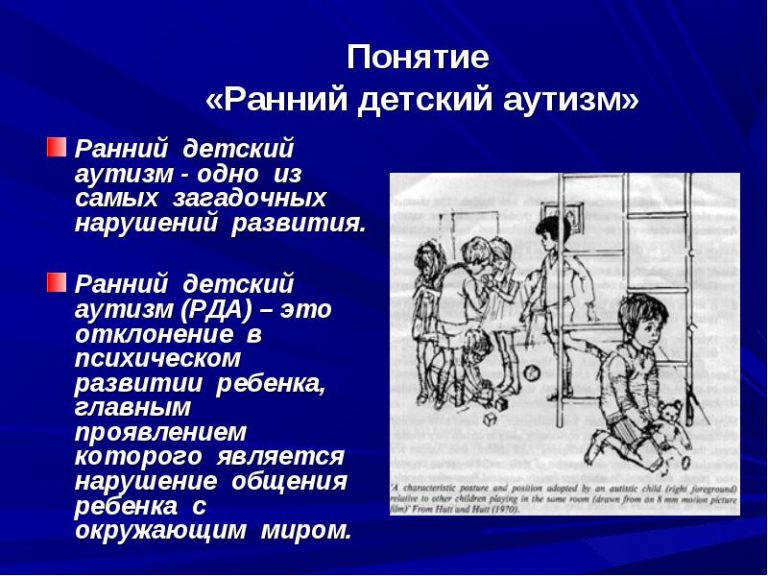
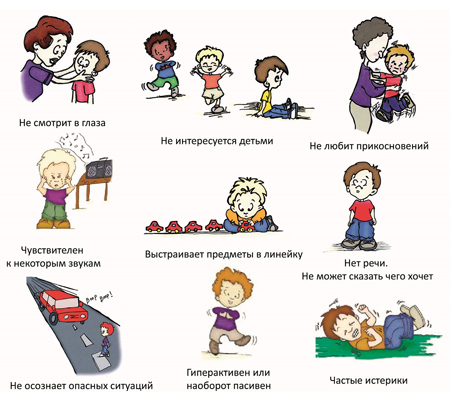
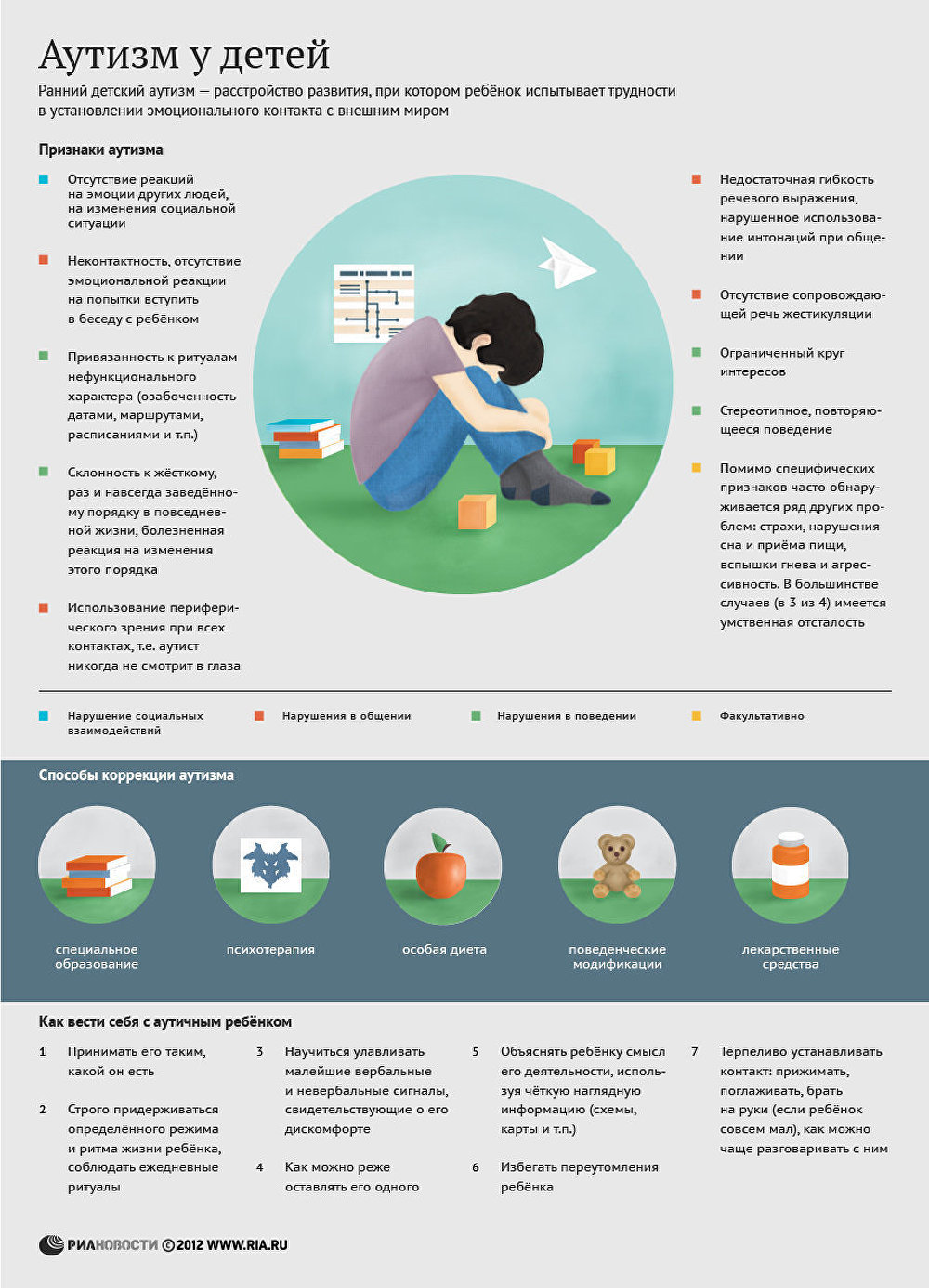
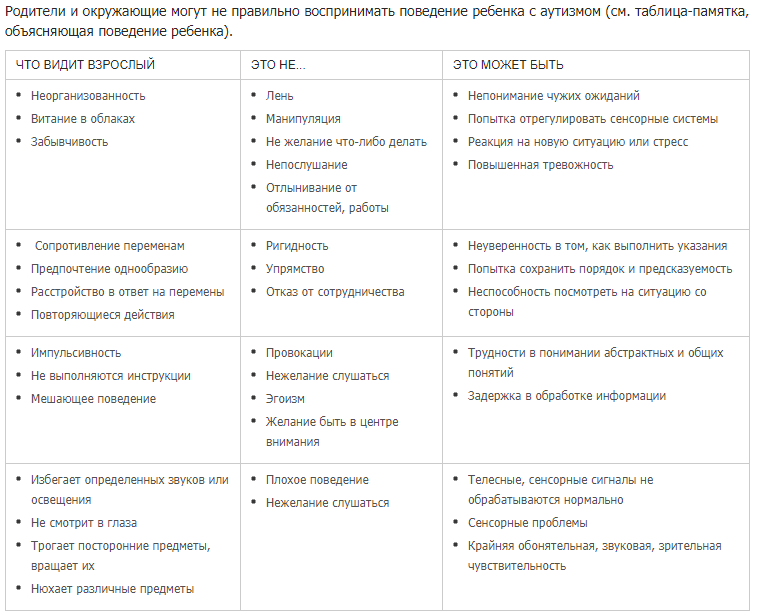
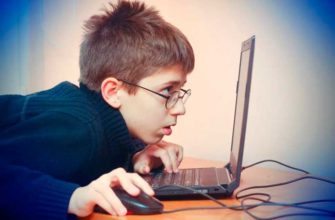
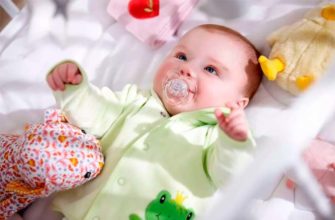
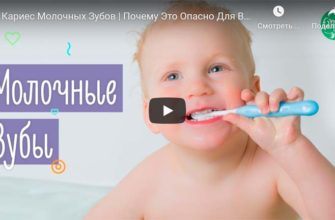
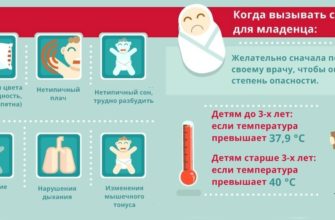
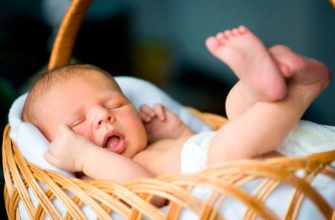
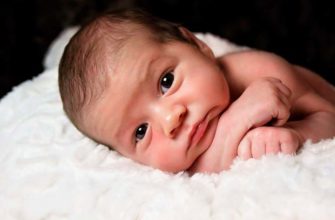
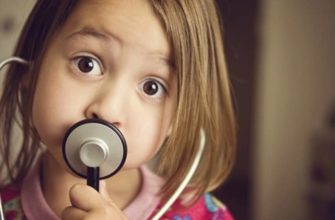

I work in a kindergarten as a psychologist, sometimes I had to work with children with autism. Of course, it is impossible to cure this, but it is possible to make these children more social personalities, but they need an individual approach and find a way to contact this child and teach him how to communicate with people. The main thing is not to leave such a child, but to help him develop in a social sense.
For autistic children, the main thing is to find the person you can trust. These children are so hypersensitive that they require a careful attitude, which is so difficult to find in modern society. My sister has such an extraordinary child, and I try to just keep quiet with him, and only with a look do we understand each other.